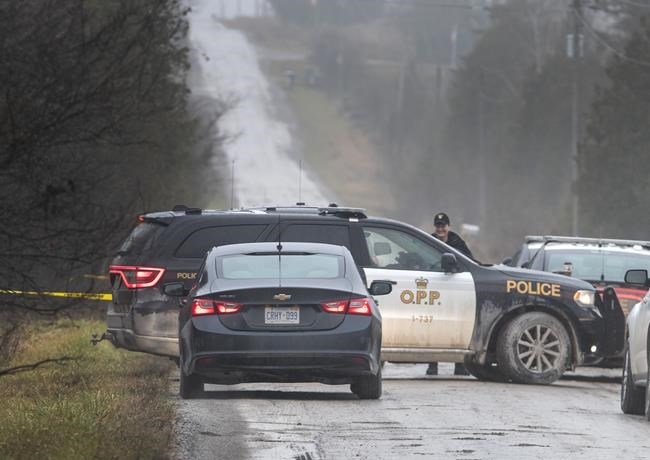Despite growing calls for changes in policing, the number of officer shootings in Canada remains too high, say criminology experts.
On-duty police officers fired at 64 people in Canada between Jan. 1 and Nov. 30. Exactly half were killed. Seven were uninjured.
"I am deeply concerned by the unrelenting nature of this problem. There is nothing inevitable or natural about this problem," said Temitope Oriola, a criminology professor at the University of Alberta and a former special adviser to the province in a review of its Police Act.
The Canadian Press tracked each shooting using information from police, independent investigative units, and independent reporting. The resulting snapshot shows little has changed since 2020, when global movements called for more police accountability and transparency.
This year, the number of police shootings has so far matched the total from 2020, when 60 people were shot and 36 of those were killed. That year, five shootings were in December and the youngest was a one-year-old boy killed in Ontario.
There have been at least three deadly shootings this month, which have not been included in The Canadian Press tally.
In 2021, young men continued to make up the vast majority of people shot by police.
There was also a disproportionate number of people of colour. Race could be identified in 17 shootings. More than 50 per cent involved Indigenous people and 17 per cent were Black.
Oriola said policing requires a level of force and, in some situations, it can be legitimate. Police shootings remain uncommon in Canada when compared with other countries, including the United States, he said, but the number is still troubling.
In just over 26 per cent of cases this year, the reason police were originally called was because of weapons. That was followed by calls about domestic assault or a person of interest in an ongoing investigation.
In 81 per cent of shootings, the person had a weapon. In 52 per cent, it was a knife or other edged weapon; in 31 per cent, the person had a firearm.
In six shootings, police had been called to do a wellness check. Four people were killed.
Generally officers are sent out to check on someone whose mental health or well-being is a concern. Critics have called for police to change how officers respond to such calls. There were nine fatal police shootings that started as wellness checks in 2020.
Experts say there needs to be more context when tracking the numbers. In many cases, a person may be in a mental-health crisis and have a weapon. They say police need to practise more restraint and society needs better supports for those in need.
Julian Jones, 28, was shot and killed by RCMP on the Opitsaht reserve on Meares Island, B.C., in late February. Community members said they requested officers for a wellness check, but police said the call was about a woman being held against her will. The death led to questions about officers attending First Nations communities.
For the first time, the Independent Investigations Office, which looks into police shootings in British Columbia, allowed an Indigenous community member to act as a civilian monitor in the review.
Erick Laming, a member of the Shabot Obaadjiwan First Nation and a lecturer of criminology at Trent University, said his research shows that police use of force has increased in recent years.
Laming was a co-author of a recent study for the Canadian Criminal Justice Association about use of force. It found that between 2010 and 2019, fatal shootings by RCMP increased by 39 per cent and non-fatal shootings rose by 50 per cent.
There was also a 12-per-cent increase in Mounties pointing firearms at civilians.
In 2021, RCMP had the most shootings of any police force. Mounties were involved in 23 — up from 15 last year.
The Toronto Police Service was involved in six shootings, the Ontario Provincial Police had five, and Sûerté de Québec and the Edmonton Police Service each had four.
After five last year, there were no police shootings in Winnipeg. Laming said that demonstrates how it’s difficult to compare one year to the next. But, he added, it could be of value to see what officers in Manitoba’s capital have been doing differently.
Elsewhere in the country, there was a significant increase in shootings. B.C. experienced a rise of more than 110 per cent — to 13 from five in 2020.
Akwasi Owusu-Bempah, an assistant professor at the University of Toronto who studies policing, said the main difficulty in understanding police use of force in Canada is a lack of a national database.
"It's hard to figure out how many people are killed by police and what the outcome of those deaths are," he said.
"What we need is better data collection, better data reporting, and more transparency from the agencies that collect this information."
Owusu-Bempah said he never expected global demonstrations to lead to an immediate change on the front lines of law enforcement in Canada. But, he said, ongoing discussions are important.
"In terms of cultural or institutional change, those take time."
This report by The Canadian Press was first published Dec. 27, 2021.
Kelly Geraldine Malone, The Canadian Press



